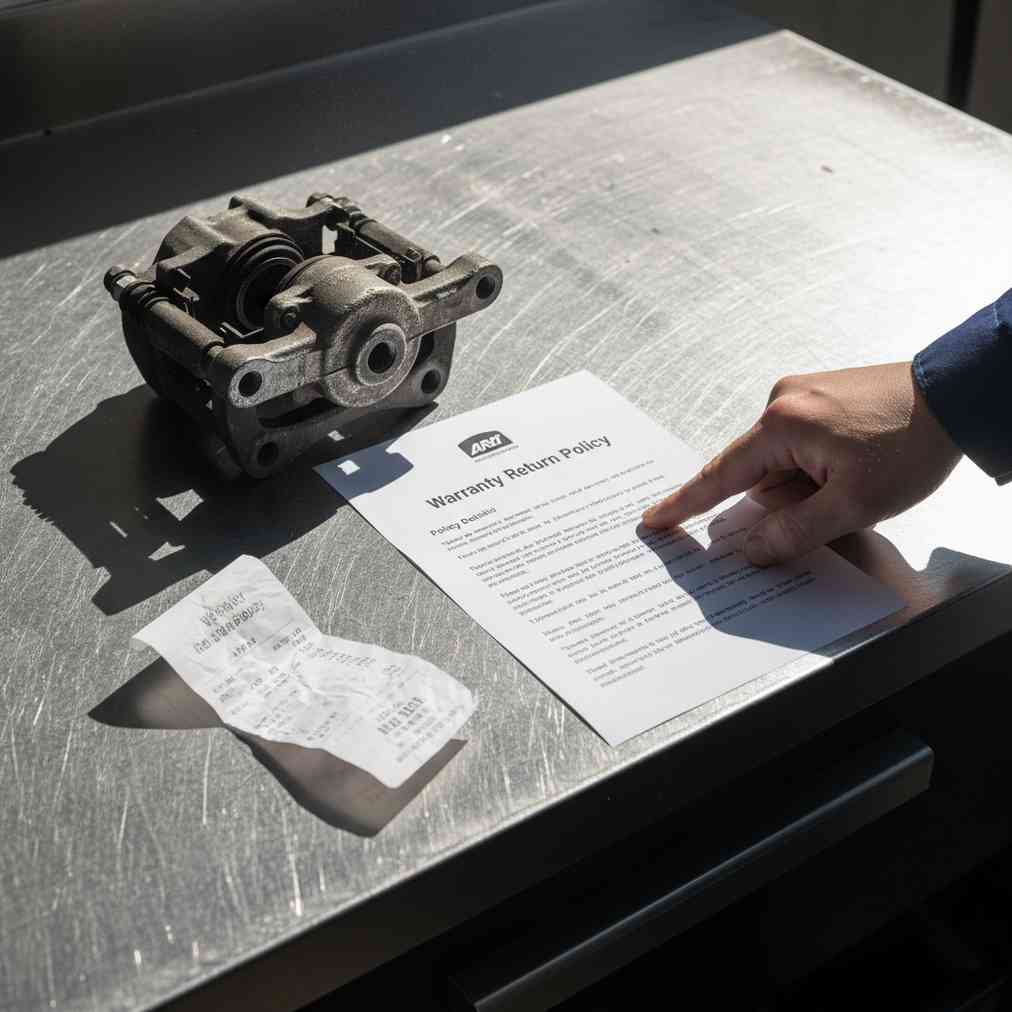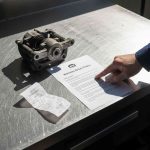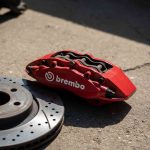Understanding U-Pull-It Return Policies: When Your Part Doesn’t Work
Finding yourself with a defective part from a U-Pull-It salvage yard can be frustrating, especially after investing time and effort to remove it yourself. Understanding the return policy before you purchase can save you both money and headaches down the road. This comprehensive guide will walk you through what to expect and how to navigate the return process when your salvaged part fails to perform.
The Standard U-Pull-It Warranty Structure
Most reputable salvage yards near me operate on an “as-is” basis, but many offer limited warranties to provide consumer protection. The typical warranty structure includes several key components that every buyer should understand before making a purchase.
| Warranty Feature | Standard Terms | What It Means |
|---|---|---|
| Duration | 30-45 days | Time limit for returns from invoice date |
| Remedy | Exchange only | Replacement part, not cash refund |
| Labor Coverage | Not included | Installation costs are your responsibility |
| Required Documentation | Original receipt | Must present purchase proof |
| Restocking Fee | Up to 25% | Charged even for defective parts |
Duration and Coverage Details
The warranty period varies significantly between yards. While some offer only 30 days, others like Indy U-Pull-It provide 45-day exchange warranties, and select locations such as Pick-N-Save may offer up to 6 months on certain parts. This variation makes it crucial to verify the specific terms at your chosen yard before purchase.
- Short-term warranties (30-45 days): Most common across the industry
- Extended warranties (6+ months): Typically offered by full-service yards
- High-risk parts: Engines and transmissions may have separate terms
- Electrical exclusions: Many yards exclude electronic parts entirely
Critical Requirements for Valid Returns
Successfully returning a defective part requires meeting specific conditions that protect both the yard and legitimate customers. Understanding these requirements can prevent disappointment when attempting to return a failed part.
Documentation and Part Condition
The most critical requirement is maintaining your original receipt. Without this documentation, most yards will refuse any warranty claim. Additionally, the part must be returned in its original condition with all yard markings intact.
- Paint marks: Color-coded markings indicating part status
- Heat tabs: Temperature indicators that void warranty if melted
- Original condition: No disassembly or modification allowed
- Matching serial numbers: Some yards track high-value parts individually
“The biggest mistake customers make is trying to repair a part before bringing it back. Once you’ve opened up an alternator or tried to rebuild a starter, the warranty is void,” explains a manager at a major salvage operation.
The Labor Cost Reality
One of the most important aspects to understand about U-Pull-It warranties is that they almost never cover labor charges. This exclusion can make even a “free” replacement part expensive if it fails after installation.
High-Risk, High-Labor Parts
The labor exclusion becomes particularly costly with major parts that require significant installation time. According to research methods used by industry analysts, labor costs can often exceed the original part price.
| Part Type | Typical Labor Hours | Labor Cost Range | Risk Level |
|---|---|---|---|
| Engine | 8-12 hours | $800-$1,200 | Very High |
| Transmission | 6-10 hours | $600-$1,000 | Very High |
| Transfer Case | 4-6 hours | $400-$600 | High |
| Body Panels | 1-3 hours | $100-$300 | Low |
Contrasting Policies: The Good, Bad, and Ugly
Not all salvage yards offer equal protection. Understanding the difference between favorable and unfavorable policies can help you choose where to shop for parts.
Favorable Warranty Features
- 30-90 day exchange periods
- Parts replacement guaranteed
- Refund option if replacement unavailable
- Reasonable restocking fees (under 15%)
- Clear, written policy documentation
Red Flag Policies to Avoid
Some yards offer minimal protection that can leave customers with expensive losses. These “horror story” policies often include:
- Store credit only: No cash refunds or part exchanges
- Electrical parts excluded: Common failure points not covered
- High restocking fees: Charges exceeding 25% of purchase price
- Extremely short warranties: Less than 30 days coverage
- No written policy: Verbal promises that aren’t honored
Strategic Shopping: Maximizing Your Protection
Smart shoppers can minimize their risk by understanding which parts carry the highest failure rates and shopping accordingly. If you’re considering selling a junk car to buy parts elsewhere, factor in the warranty differences between yards.
Risk Assessment by Part Category
Different auto parts carry varying levels of failure risk, which should influence both your shopping decisions and warranty expectations.
| Risk Level | Parts Examples | Recommended Warranty | Key Inspection Points |
|---|---|---|---|
| High Risk | Electronic modules, sensors, starters | 6+ months preferred | Test before installation |
| Medium Risk | Alternators, AC compressors, pumps | 30-90 days adequate | Visual inspection, resistance testing |
| Low Risk | Body panels, mirrors, interior trim | 30 days sufficient | Physical damage assessment |
Steps to Take When a Part Fails
When you discover that your salvaged part isn’t working, following the proper procedure can make the difference between getting a replacement and losing your investment entirely.
Immediate Actions
- Stop using the part immediately to prevent further damage
- Locate your original receipt and verify warranty period
- Document the failure with photos if possible
- Remove the part carefully maintaining original condition
- Contact the yard promptly to discuss return options
What to Bring for Your Return
Successful returns require proper preparation. According to market research methods used to study customer satisfaction, prepared customers have significantly higher success rates.
- Original receipt with date and part details
- The failed part in original condition
- Photo identification matching receipt name
- Documentation of failure if available
- Realistic expectations about remedy options
Understanding Restocking Fees and Hidden Costs
Many customers are surprised to discover that returning even a defective part can incur charges. Understanding these fees upfront helps avoid unpleasant surprises.
Common Fee Structures
| Fee Type | Typical Amount | When Applied | Negotiability |
|---|---|---|---|
| Restocking Fee | 15-25% of purchase | All returns, including defects | Sometimes waived for clear defects |
| Inspection Fee | $10-25 flat rate | When failure cause disputed | Often waived for repeat customers |
| Documentation Fee | $5-15 | Processing paperwork | Rarely waived |
Special Considerations for High-Value Parts
Expensive parts like engines and transmissions often have different warranty terms and return procedures. These parts represent significant investments that require extra protection.
Extended Warranty Options
Some yards offer optional extended coverage for major parts, though this is less common in self-service operations. When available, these warranties might include:
- Labor warranty coverage up to specific dollar amounts
- Extended time periods of 6-12 months
- Partial labor reimbursement at predetermined hourly rates
- Multiple replacement guarantee if initial replacement also fails
Prevention: How to Avoid Return Situations
The best return policy is the one you never need to use. Smart shopping techniques can dramatically reduce your chances of getting a defective part.
Pre-Purchase Testing When Possible
While you can’t fully test every part in the yard, some basic checks can identify obvious problems:
- Visual inspection for cracks, corrosion, or damage
- Physical testing of moving parts for smooth operation
- Electrical continuity testing with a multimeter
- Fluid contamination checks in hydraulic parts
- Wear pattern analysis on friction surfaces
Choosing the Right Donor Vehicle
The condition of the vehicle you’re pulling from can provide valuable clues about part reliability. Research from automotive industry studies shows strong correlations between vehicle condition and part lifespan.
- Low-mileage vehicles typically yield better parts
- Accident damage location affects part integrity
- Maintenance indicators suggest overall care level
- Fluid conditions reveal internal part health
Regional Variations in Return Policies
Warranty terms can vary significantly by region due to local competition and state consumer protection laws. Understanding these variations helps set appropriate expectations.
State-by-State Differences
Some states have stronger consumer protection laws that effectively mandate minimum warranty periods or return rights, while others allow yards more flexibility in their policies.
| Consumer Protection Level | Example States | Typical Policy Impact |
|---|---|---|
| High Protection | California, New York, Massachusetts | Longer warranties, better return terms |
| Moderate Protection | Texas, Florida, Illinois | Standard industry practices |
| Minimal Protection | Many rural/agricultural states | Buyer-beware policies common |
Making the Most of Your Warranty
Understanding how to work within the warranty system can help you get the best possible outcome when problems arise.
Communication Strategies
How you approach the yard staff can significantly impact your success rate. Professional communication and proper documentation make staff more willing to help resolve issues favorably.
- Be polite and professional in all interactions
- Have documentation ready before approaching counter
- Explain the problem clearly without blame or anger
- Ask about options rather than demanding specific remedies
- Build relationships with regular staff members
The Future of Salvage Yard Warranties
The salvage yard industry continues evolving, with some yards improving their warranty offerings to compete more effectively with new parts suppliers. Understanding these trends can help you choose yards that offer the best long-term value.
Technology Integration
Advanced yards are beginning to implement technology solutions that improve both part quality assessment and warranty administration. These developments, supported by data science methodologies, include:
- Digital receipt systems that prevent loss
- Part testing equipment for better quality control
- Inventory tracking that follows part history
- Customer databases that track purchase and return patterns
Key Takeaways for Smart Shoppers
Successfully navigating U-Pull-It return policies requires preparation, understanding, and realistic expectations. Remember these critical points when shopping for salvaged auto parts:
- Always confirm warranty terms before purchasing
- Keep your receipt safe and in good condition
- Understand that labor costs aren’t covered by warranties
- Inspect parts carefully before and after installation
- Choose yards with favorable policies when possible
- Factor return policies into your total cost calculations
The value proposition of U-Pull-It yards remains strong for budget-conscious consumers, but understanding the warranty limitations helps you make informed decisions about which parts to buy used and which might be worth purchasing new. With proper knowledge and preparation, you can minimize your risk while maximizing your savings on quality used auto parts.





Leave a Reply
You must be logged in to post a comment.